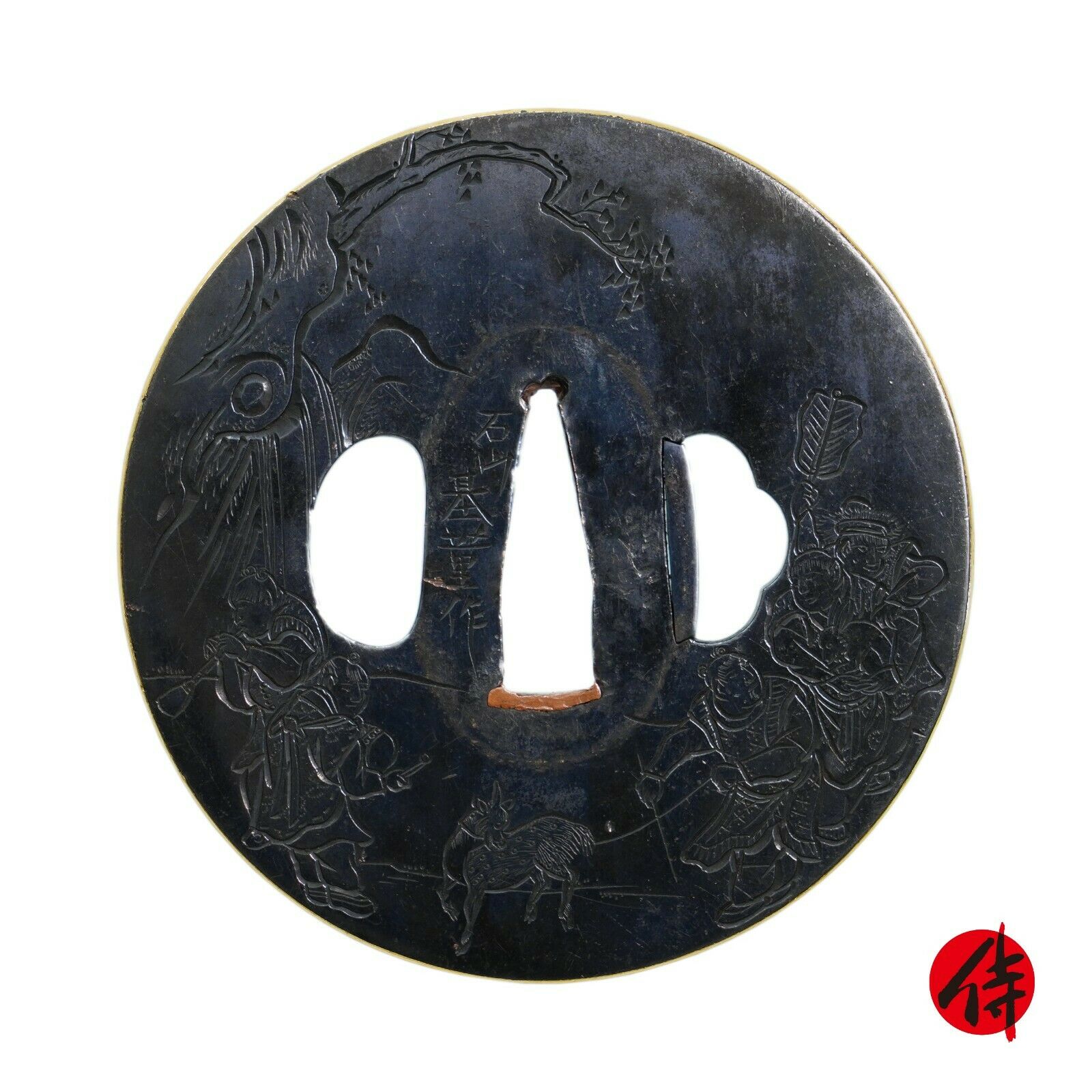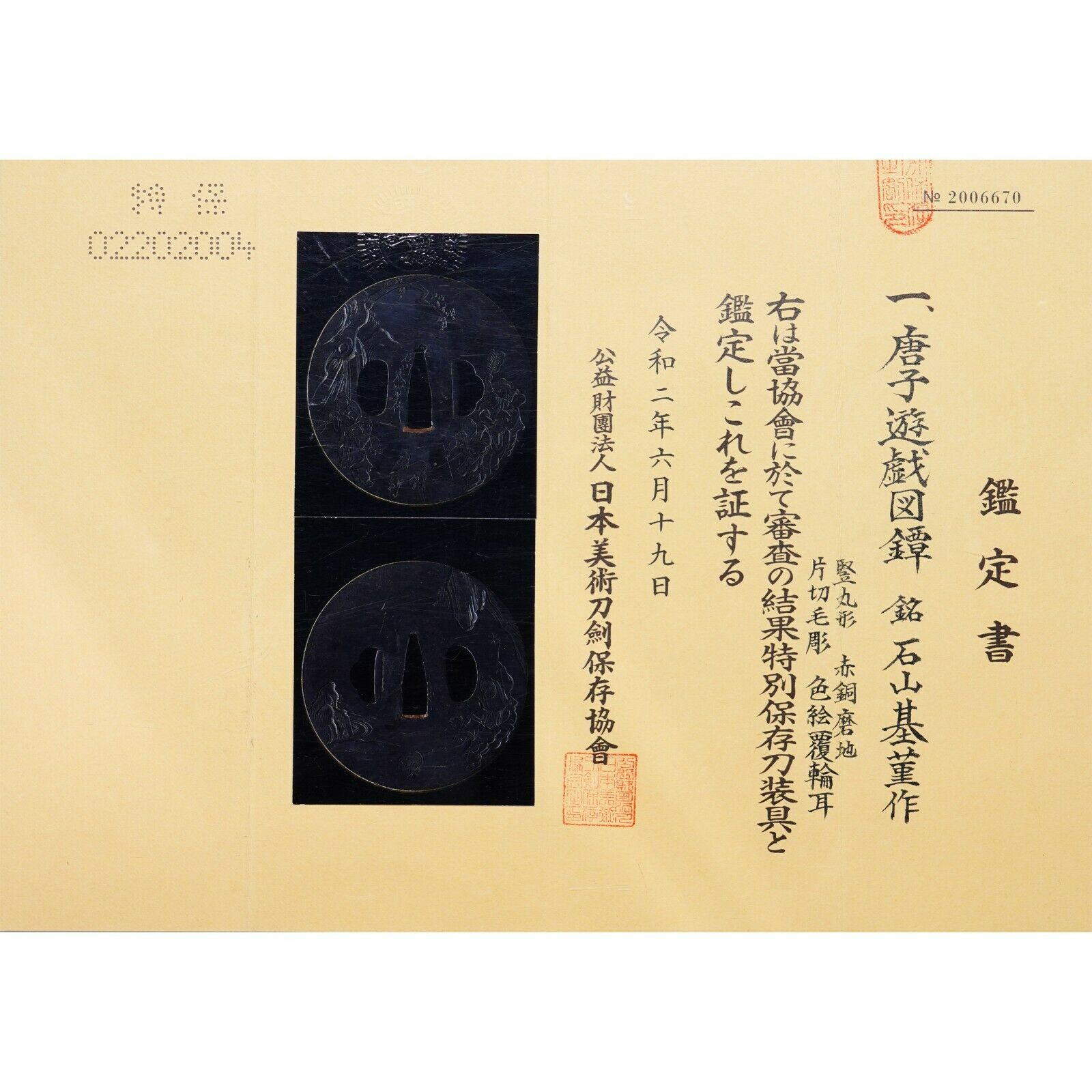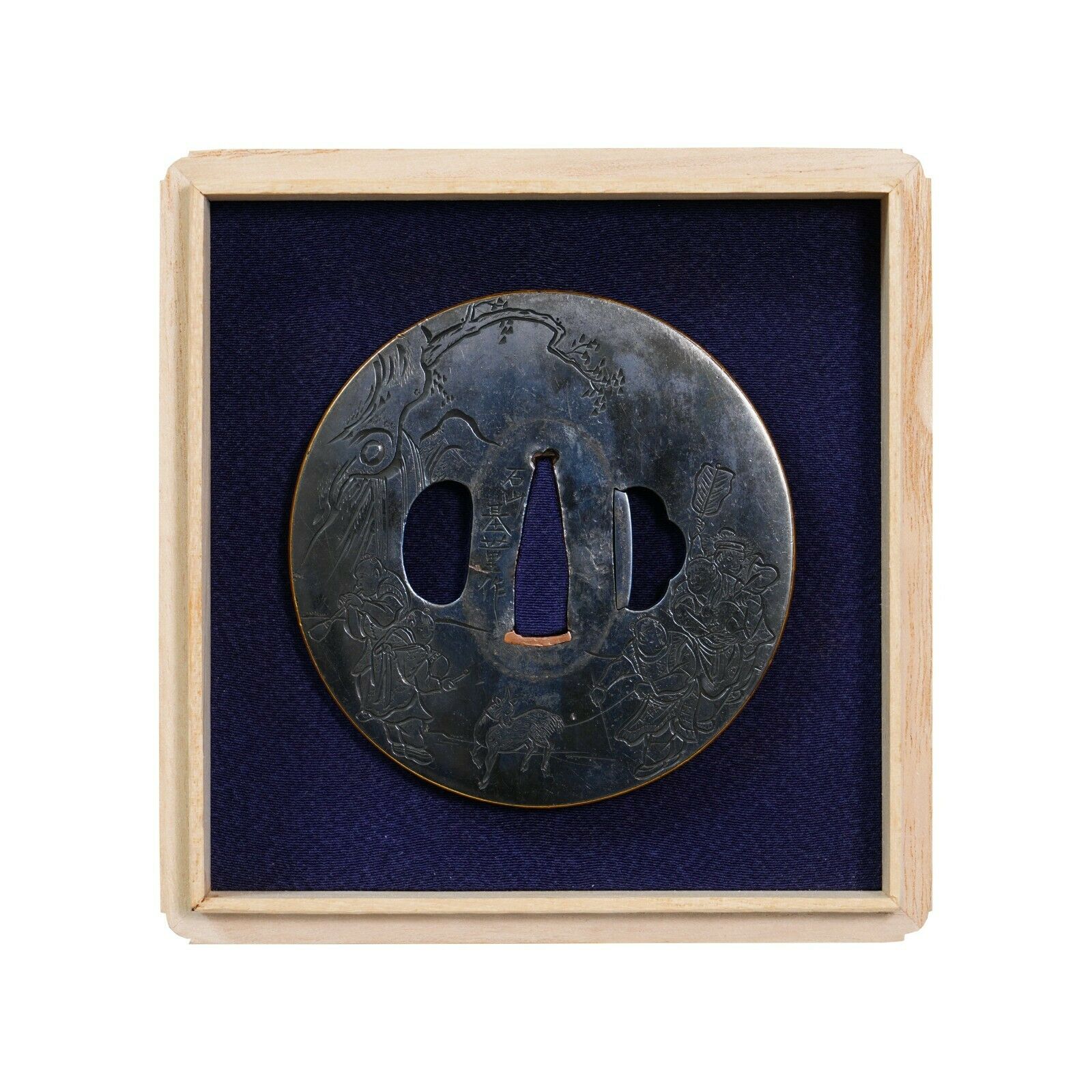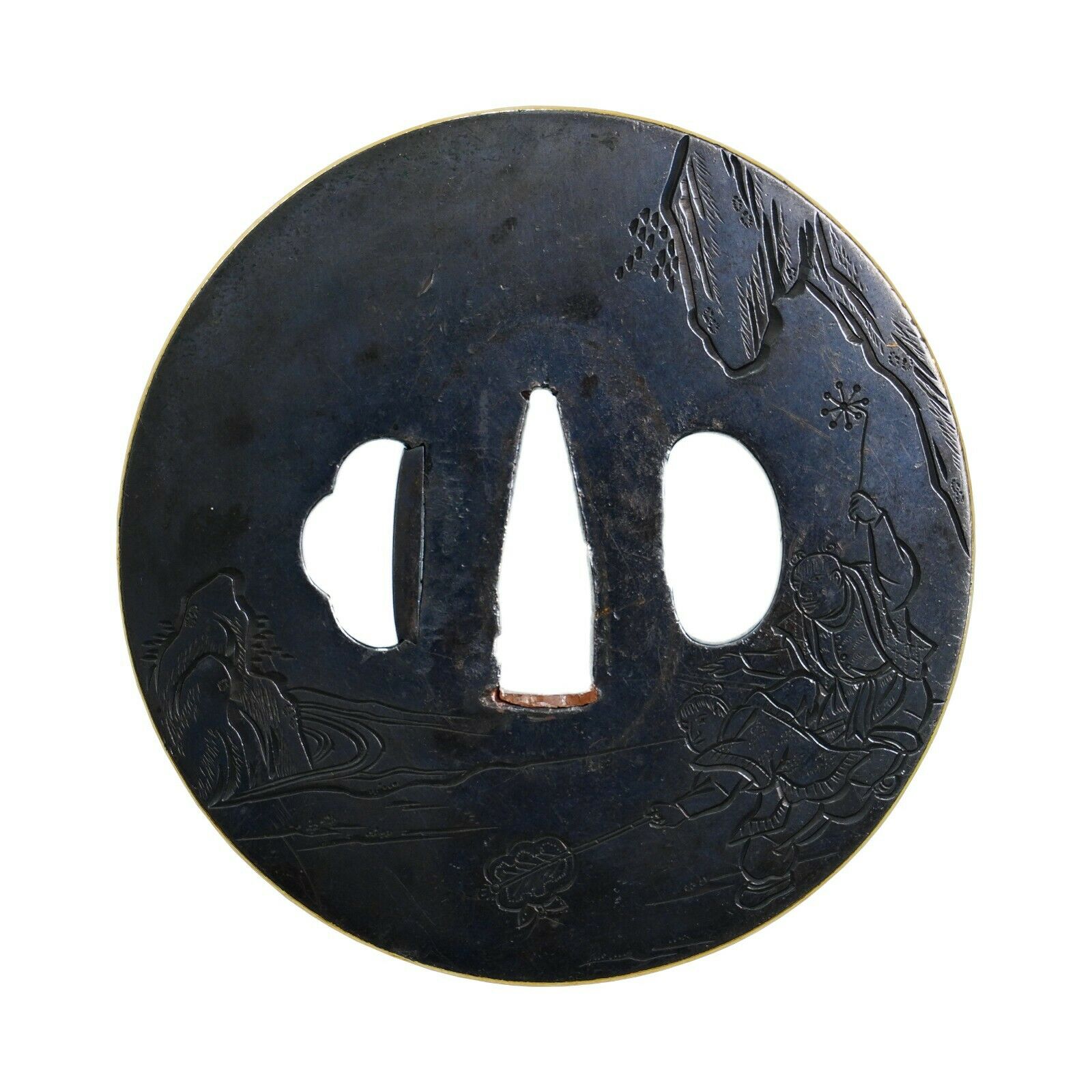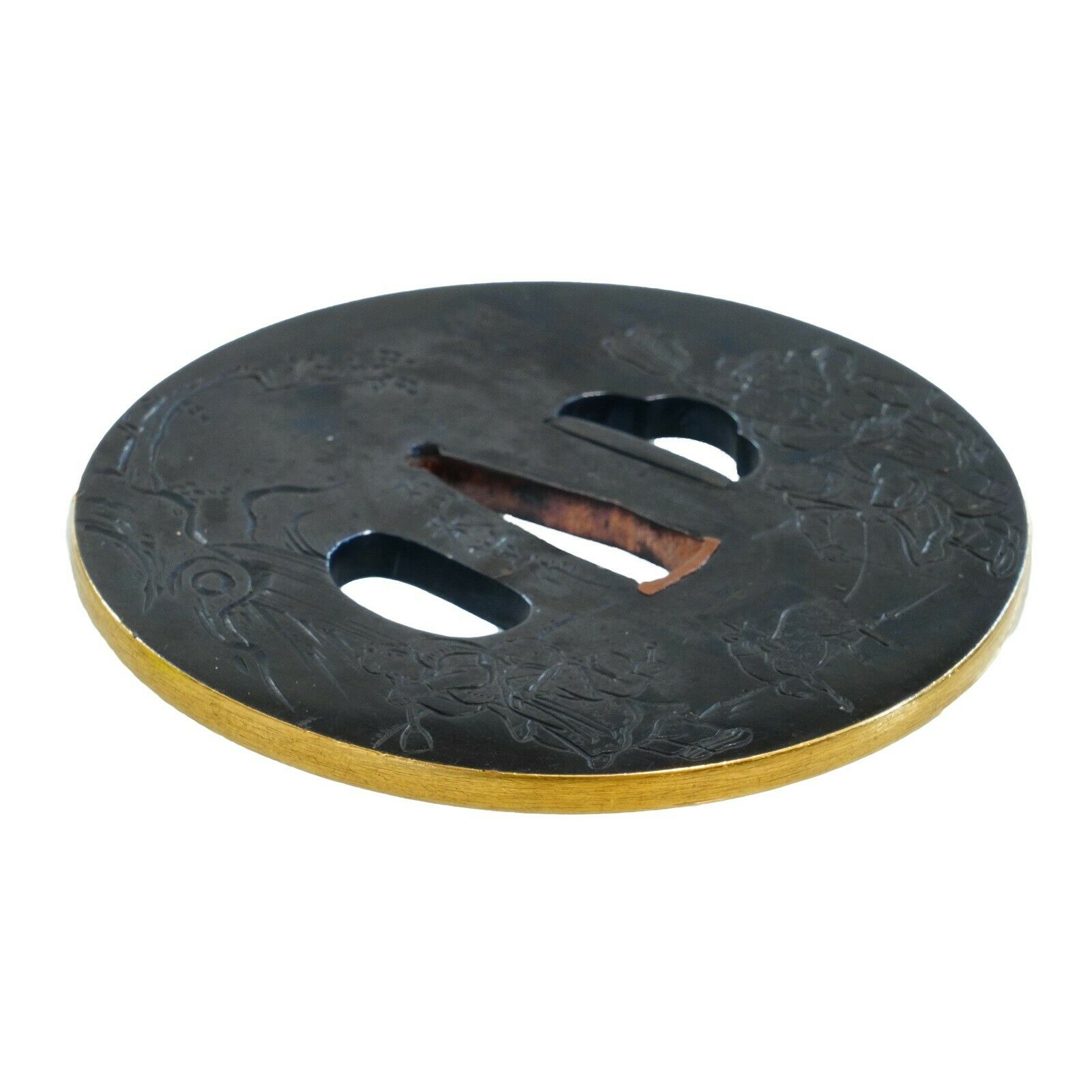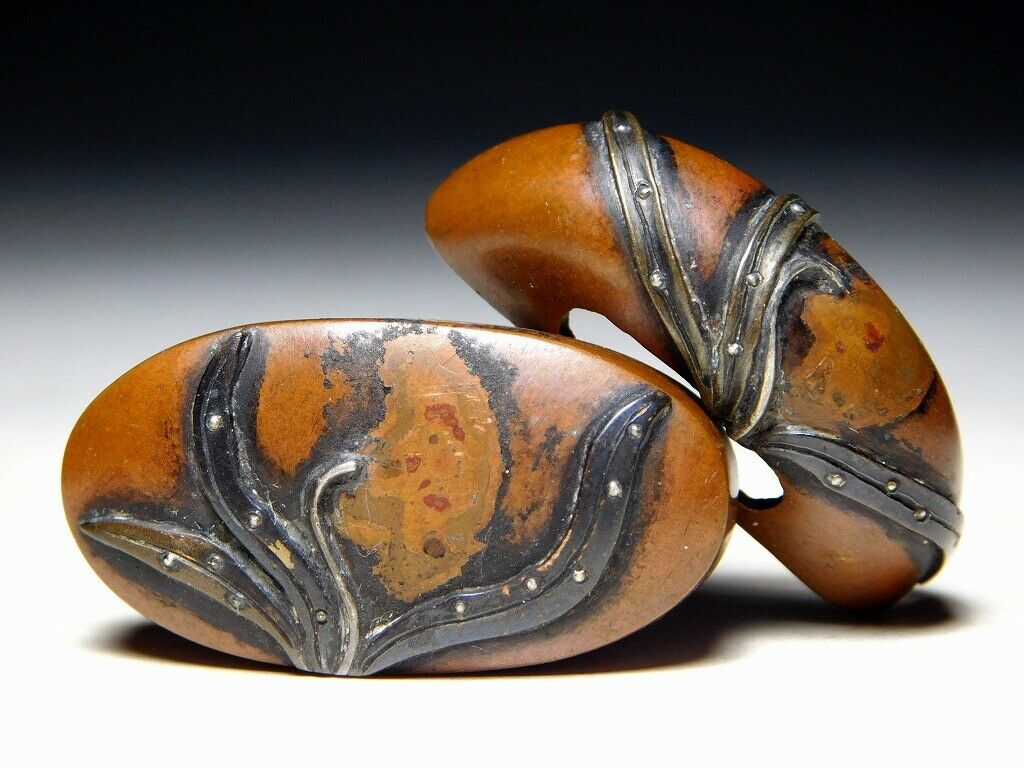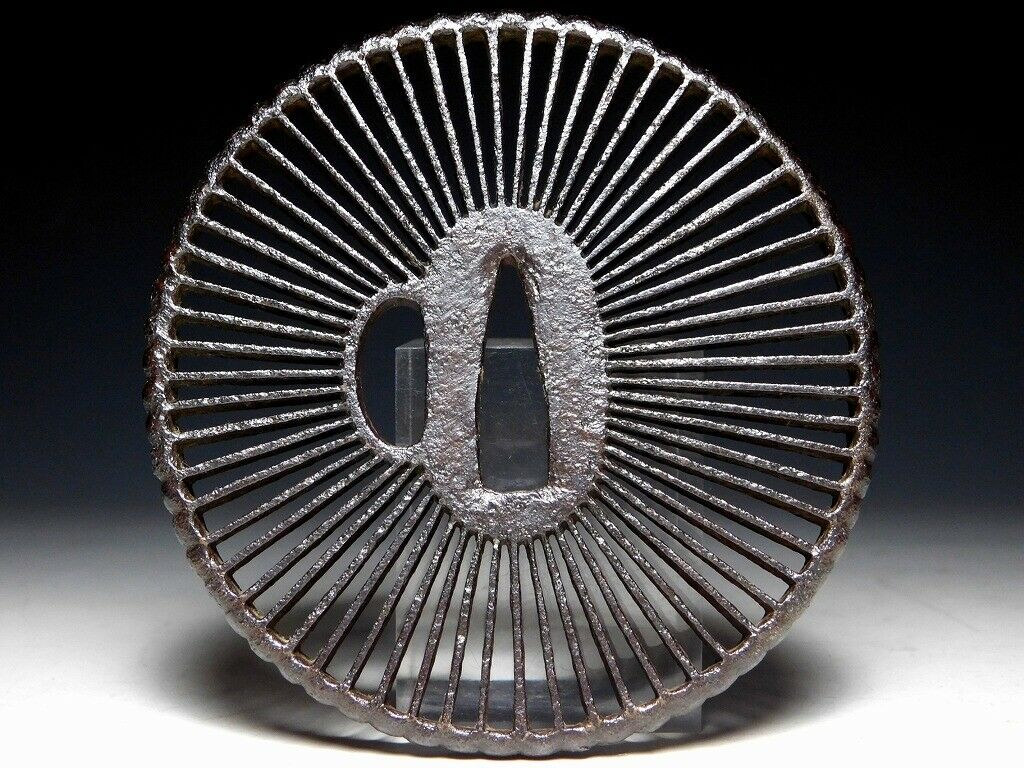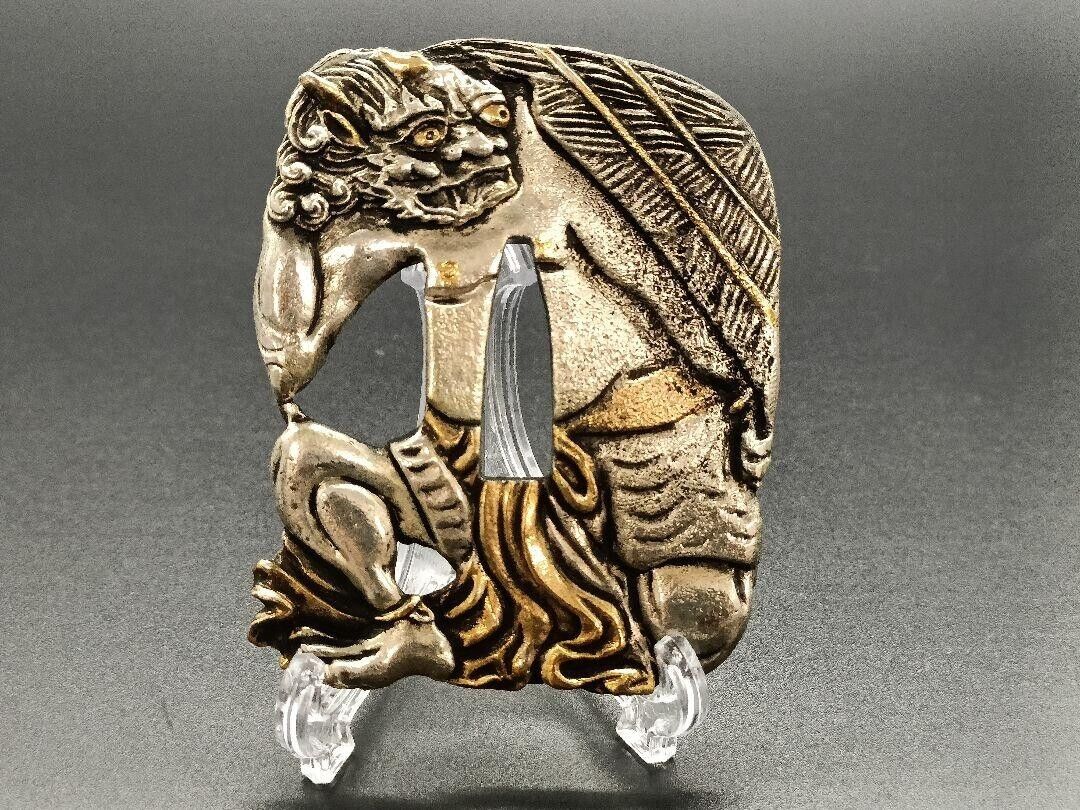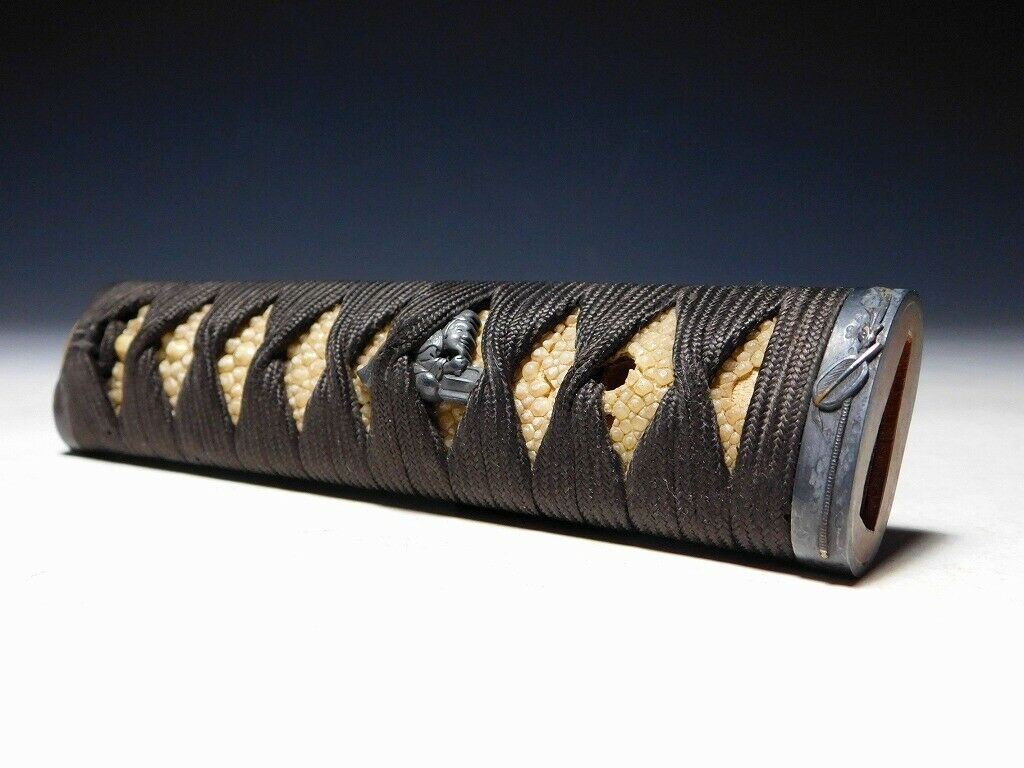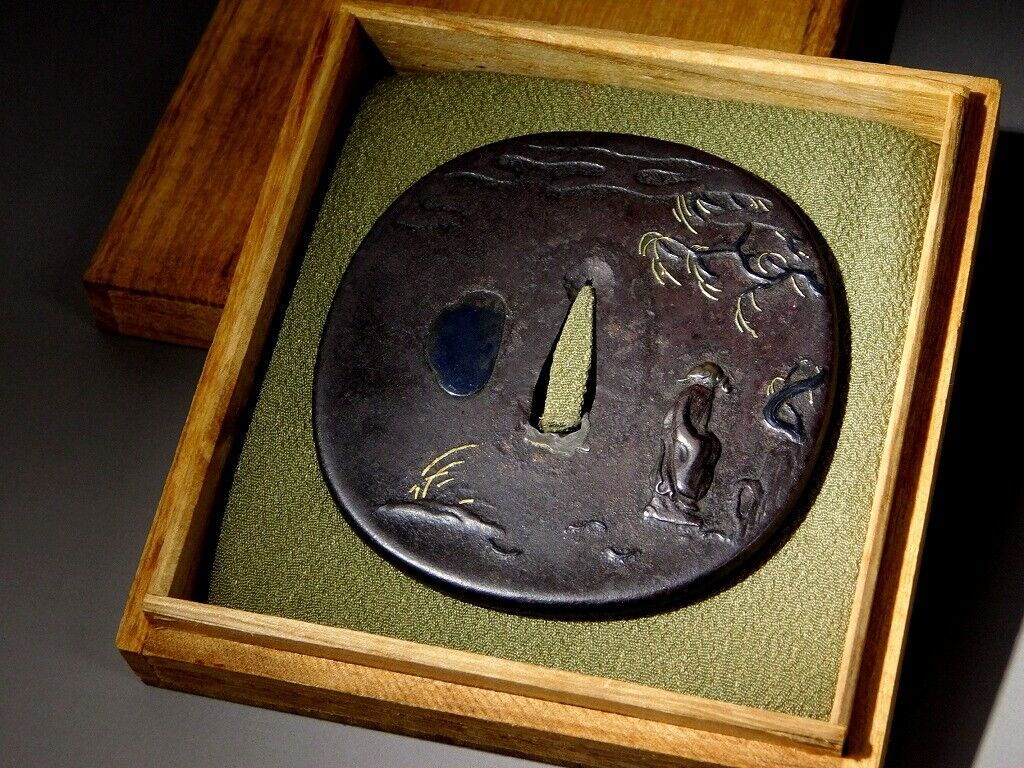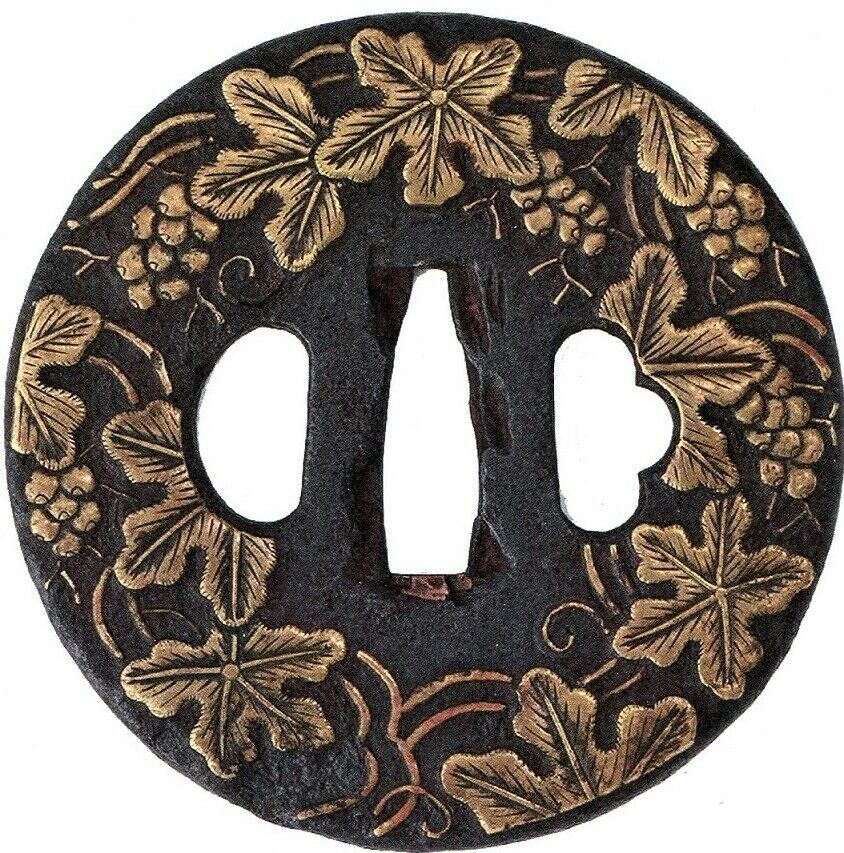-40%
Antique Tsuba for Samurai Sword with NBTHK Tokubetsu Hozon Certificate (T-351)
$ 1848
- Description
- Size Guide
Description
Welcome to Samurai Gift, official antique shop of Samurai Museum in Tokyo.About us
Samurai Museum has been dealing with antique Japanese swords and other antique items once used by Samurai since 2016 and started to sell items on eBay in 2019. We have shipped more than 400 antique items (Japanese swords, sword fitting and other antiques) to many countries from our museum shop.
Antique Tsuba for Samurai Sword with NBTHK Tokubetsu Hozon Certificate (T-351)
INCLUDED
: Wooden box, Cushion, NBTHK Tokubetsu Hozon Certificate
NOT INCLUDED
: Tsuba stand
Title:
Karako Yugi Zu
Signature:
石山 基菫 (Ishiyama Mototada)
Age: Edo period
Material:
Shakudou (赤銅, the mixture of copper and gold)
Description
Oval-shaped Tsuba made from Shakudou (赤銅). It is an alloy of copper and gold. Due to the characteristics of the material (easiness of processing), adhesiveness, ease of plating, and the beauty of black coloring. As Shakudou is made from copper and a small quantity of Shirome (しろめ, an alloy of tin and lead), and gold, Shakudou Tsuba has an elegant black color. That is why this material is also called Karasu (烏銅, Shakudou’s black color is likened to crow. Crow is called Karasu in Japanese).
This Tsuba’s Mimi (耳, edge of Tsuba) is covered with gold-colored metal. This decorative covering technique is called Fukurin (覆輪). It gives a gorgeous look to this work. Furthermore, it has a practical use, such as preventing the wear of the edge part. Also, it prevents the wear and tear of the Kimono if the edge damages it by touching the cloth.
The theme of this Tsuba is Karako Yugi Zu (唐子遊戯図). Karako means a child who has a Chinese hairstyle or fashion. Alternatively, it represents the baby’s hairstyle in the Edo period: leaves a little hair on the left and right of the head and shaves the others. In this Tsuba, the former meaning applies. Some children are running around with an animal, and others enjoy playing musical instruments such as flute and drum. The maker’s high-quality carving technique brilliantly expresses the vivid appearance of children who are playing around in nature.
This Tsuba is recognized by The Society for Preservation of Japanese Art Swords, which is known as NBTHK. According to its certificate, this Tsuba’s maker is Ishiyama Mototada (石山 基菫). He lived in Kyoto prefecture. A theory says Mototada did well in the almost same era as Hosono Masamori (細野 政守), who was also working as a metalworker in Kyoto. Masamori was good at portraying the scenery of the city of Kyoto with detailed sculptural techniques. Mototada was good at depicting landscapes that seems suburb of Kyoto with the combination of Hira-Zougan (平象嵌, a type of inlay technique) and Kebori (毛彫, a type of linear carving expression). Therefore, it is considered that Masamori inspired the style of Mototada.
*As this item is an antique, please check each photo and ensure its condition.
What is Tsuba?
Tsuba is the hand-guard of the Japanese sword. High-class Samurai wore his katana sword with its beautiful sword mountings such as Tsuba. Tsuba’s front design tends to be more decorative as this part was often seen by other Samurais when he was walking on the streets.
Size
Size
Thickness
Nakagoana
Weight
7.6cm×7.4cm
0.4cm
2.7cm×0.7cm
150g
Please note that These photos are an example of display. Tsuba stand is NOT INCLUDED in this item.
Terms Condition
Please note that your use of e-bay is governed by the following terms. These Terms are between you and Samurai Museum and govern our respective rights and obligations.
You are responsible for paying all customs fees and your local taxes. Please check your domestic law before making any bidding or purchase.
You must be at least 18 years of age or older to buy Japanese swords. Samurai Museum will not be responsible if one harms others or hurts oneself by misusing the items he or she purchased from us.
Samurai Gift is not responsible for any lost package that is incorrectly addressed due to customer error. We make our shipping labels based on the information a customer provides, therefore in case you enter an incorrect or incomplete address and your package is lost, Samurai Gift Shop is not responsible. If you enter your address incorrectly, you are bound to inform us immediately (within 24 hours of your order)
Shipping Delivery
After confirming full payment from you, we will ship your item. We ship via EMS, international shipping carrier based in Japan. It will normally takes 5-14 days for the item to arrive at your given address after we dispatch it. We will inform your tracking number via eBay.
Time of delivery is estimated as accurately as possible by the carrier but does not take into account any delays beyond our control such as by inclement weather, post office holiday seasons.
*Please keep in mind that due to the pandemic in the world, there are delays in shipping to many countries as most of the airlines are reducing the number of flights from Japan. If you like to know the detail about shipping, please ask us first before making a purchase.
Payment Method
We only accept payment through Paypal. Payment needs to be completed within 72 hours of your purchase. If the payment is not made by the buyer for 4 days without contacting us, we will reach eBay to relist the item.
Shipping from
Samurai Museum in Tokyo
If you are interested in antique Japanese sword mountings for sale, please
CHECK HERE
.
Copyright © 2021 Samurai Museum. All rights reserved.
